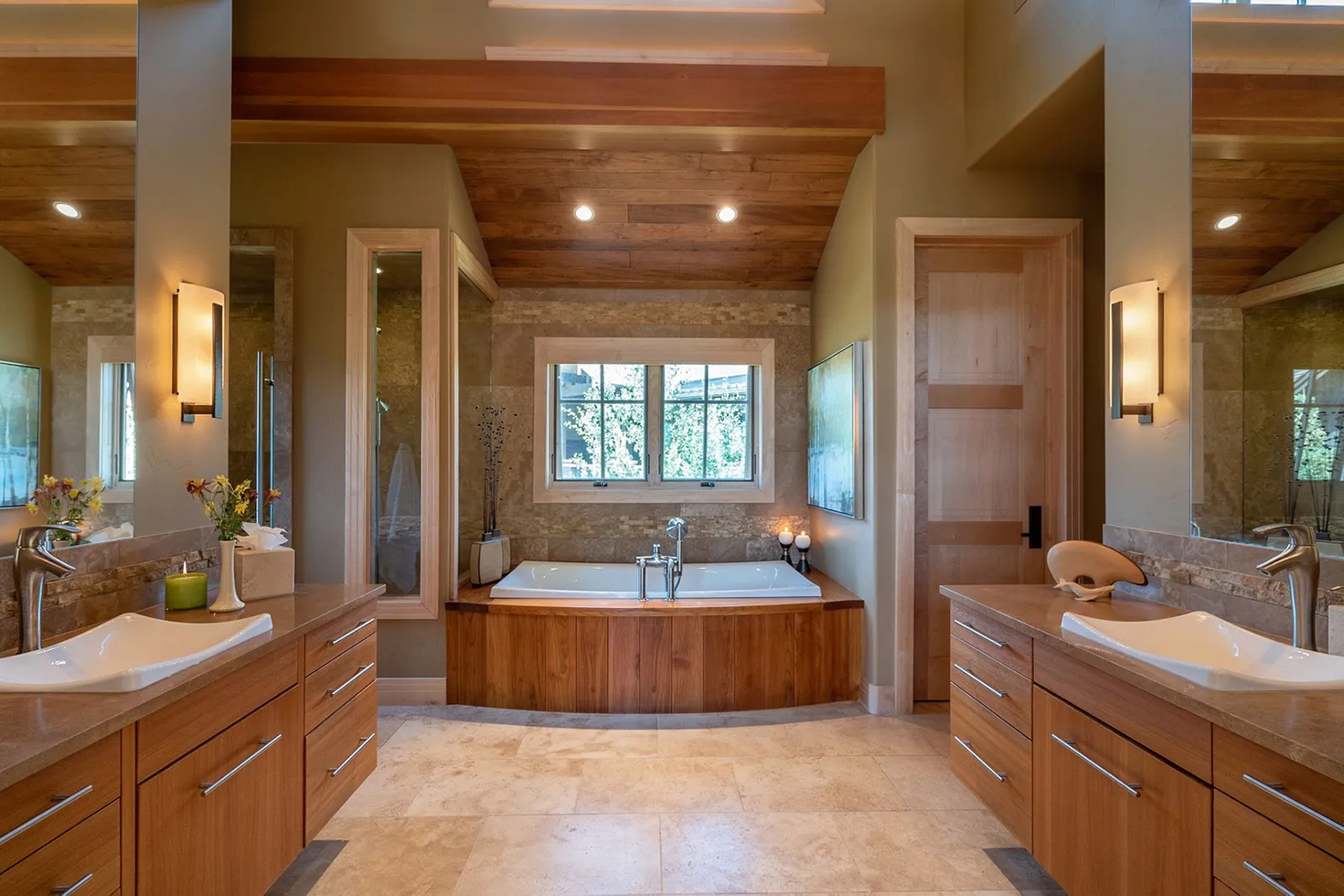Luxury real estate buyers lead increasingly complex lives, so it’s no surprise that many are opting for turnkey homes. Move-in-ready and furnished listings are of rising interest to buyers who are short on time and uninterested in taking on a project. But while the preference for turnkey homes may be on the rise among high-end buyers, that doesn’t mean agents can’t arm their clients with everything they’d need to know to tackle a renovation, should the perfect fixer-upper come along.
Here, three top agents outline their tips for selling premium listings that require a bit of work.
1. Know your audience

Ann Hance
When advising clients on potential home projects, it’s important to know the attitudes already at play in your market. High-end homebuyers are more likely to seek out a move-in ready home — and less likely to take on renovation projects — than they were in recent years.
This has been true of younger and first-time homebuyers since before the global health crisis started influencing purchases. “Millennials represent about a third of the buying public, and for them, lifestyle is paramount,” notes Ann Hance, Associate Broker with Daniel Gale Sotheby’s International Realty in Long Island, New York. “Most do not want to follow in their parents’ footsteps, spending weekends doing DIY projects.”

Kim and Rick Slater
Kim and Rick Slater, Licensed Salespersons with Sotheby’s International Realty, have watched this trend occur with buyers of all ages in their East Hampton, New York market. “For more than five years now, the majority have been shopping for up-to-date and move-in ready residences,” Kim says. “Most customers are very hesitant to see properties that require work.”
This is a missed opportunity, as the luxury market has properties with magnificent renovation potential. It’s up to agents to help buyers understand that fixer-uppers are not only more affordable options, but they also allow homeowners to fully realize their own unique, creative vision.

Malia Cox Nobrega
“Budget is certainly the main reason buyers consider a property needing renovation versus a turnkey option,” says Malia Cox Nobrega, Associate Broker and Global Real Estate Advisor at LIV Sotheby’s International Realty in Colorado. “Fixer-uppers are a bit less appealing post-COVID-19, as people are wanting homes that are ready now, especially as they work remotely or have children home from school. Having said that, there is still low inventory and high demand in Vail and Beaver Creek, so fixer-uppers remain an opportunity. If a younger buyer feels that expanding their search to a property that needs work will open up more desirable locations in the market, they typically will consider this.”
A property in need of fixing also provides instant equity for a first-time buyer. It’s an entry point into the market and an investment in the future. “When purchasing any type of property, the buyer should analyze the risk-reward scenario which, in the end, comes down to money,” says Slater. “The savvy buyer will see the upside of a typically overlooked property.”
2. Have renovation resources at the ready

Sotheby’s International Realty – East Hampton Brokerage
Selling a property with potential can hinge on whether your client has easy access to a network of renovation specialists. “Having relationships with local architects, contractors, and designers, and understanding building codes and limitations within a community is key,” says Hance. “It is our job as agents to bridge the gap between current and future value. We must have data, vision, and the right resources at our disposal.” Agents with an established roster of industry contacts can also demonstrate to hesitant millennial buyers that a renovation can be hands-off and streamlined.
If you don’t have relationships with professionals in your market, now is the time to start making their acquaintance. It’s also crucial to review the structural plans of your listings so you know what kinds of renovations are possible, and what they may cost.
“If a home has the most potential through removal of certain walls — let’s say, to open up the kitchen to the living and dining area — it’s important to do some legwork to determine how easily that can be handled,” advises Nobrega. “This isn’t something you would necessarily bring up to a buyer, but it is something that is great to have available if they ask whether the change is feasible and an estimated cost.”
3. Let your buyers see a finished product

Images courtesy of Malia Nobrega, LIV Sotheby’s International Realty
As Nobrega points out, everyone thinks they can envision a home’s potential — but many buyers struggle without visuals. It’s often necessary to give your clients a teaser. “As a listings broker, I use virtual staging to demonstrate the potential of key living spaces in a home and make it shine online,” she says. “We often blow up these photos inside the home during the actual showing. This has become a very important tool for high-level marketing.”
Alternatively, you can virtually tour buyers through a similar property. “The best way to help clients see what could be is to show them ‘model homes’ that have been turned into something new with help from the local experts,” says Slater.
This technique has led Nobrega to success. “I had a listing in a townhome complex in Vail, Colo., several years ago that was very dated — it had a tough layout, but incredible views of Vail Mountain. One of my former clients in the same complex had done a complete remodel, changing the layout and adding about 250 square feet to their unit. They gave me permission to show their property to give a vision about what could be done for my listing. I practically had to beg the buyers to check it out, but once they saw it, they were sold.”
4. Help clients plan out a practical timeline

LIV Sotheby’s International Realty
Renovations won’t happen overnight, and buyers want to be assured that there will be short-term benefits to their long-term commitment. That’s why you should emphasize the power of quick wins. “Clients will typically feel more confident in making the purchase decision knowing there are a few necessary projects upfront, with more serious renovations later,” says Nobrega.
“One of my repeat clients wanted more space for their young children and asked me to help them locate a home in a prime neighborhood,” recalls Hance. “I helped them find a home with a great yard and classic features that was well-loved by its prior owners, but not updated to today’s standards.”
Hance took time to sketch out possible floor plans, use of space and landscape options, and found that minor alterations could make a major difference. “Simply by removing overgrown landscaping and adding exterior lighting, the home already has a younger vibe. Sometimes the simplest changes are the best.”
While Vail is a long way from Hance’s Long Island market, Nobrega has seen a similar tendency. “The more a client is willing to make small instant adjustments, followed by more serious renovations down the line, the more they can offset costs through sound planning.”
“I sold a waterfront cottage to a buyer who lived in it for years before wanting to make it more his style,” recounts Slater. “His experience living in the cottage gave him a strong sense of vision for what he wanted. The finished project — a new build— took two years and turned out perfectly thanks to his comfort with the local building process and patience with the timeline.”
The sales process can require a certain amount of coaching since many buyers don’t know where to begin. “The agent’s role as an expert guide is vital,” Hance explains. “Clients need us to help them realize their vision. We are not simply selling houses — we are helping people live the lives they dream about.”
About Sotheby’s International Realty
Sotheby’s International Realty was founded in 1976 as a real estate service for discerning clients of Sotheby’s auction house. Today, the company’s global footprint spans 990 offices located in 72 countries and territories worldwide, including 43 company-owned brokerage offices in key metropolitan and resort markets. In February 2004, Realogy entered into a long-term strategic alliance with Sotheby’s, the operator of the auction house. The agreement provided for the licensing of the Sotheby’s International Realty name and the development of a franchise system. The franchise system is comprised of an affiliate network, where each office is independently owned and operated. Sotheby’s International Realty supports its affiliates and agents with a host of operational, marketing, recruiting, educational and business development resources. Affiliates and agents also benefit from an association with the venerable Sotheby’s auction house, established in 1744. For more information, visit www.sothebysrealty.com.
The affiliate network is operated by Sotheby’s International Realty Affiliates LLC, and the company owned brokerages are operated by Sotheby’s International Realty, Inc. Both entities are subsidiaries of Realogy Holdings Corp. (NYSE: RLGY) a global leader in real estate franchising and provider of real estate brokerage, relocation and settlement services. Sotheby’s International Realty Affiliates LLC and Sotheby’s International Realty Inc., both fully support the principles of the Fair Housing Act and the Equal Opportunity Act.
Source: click here














